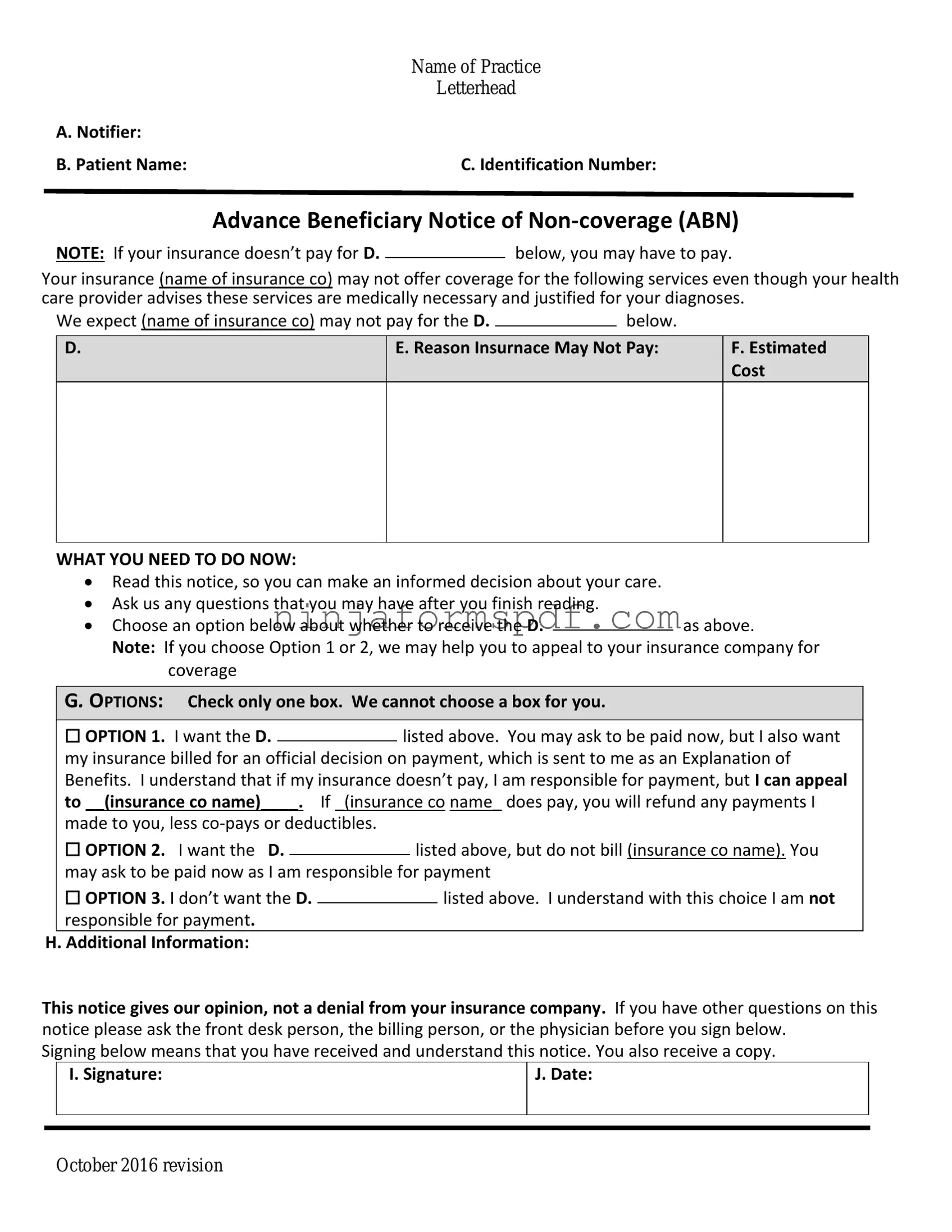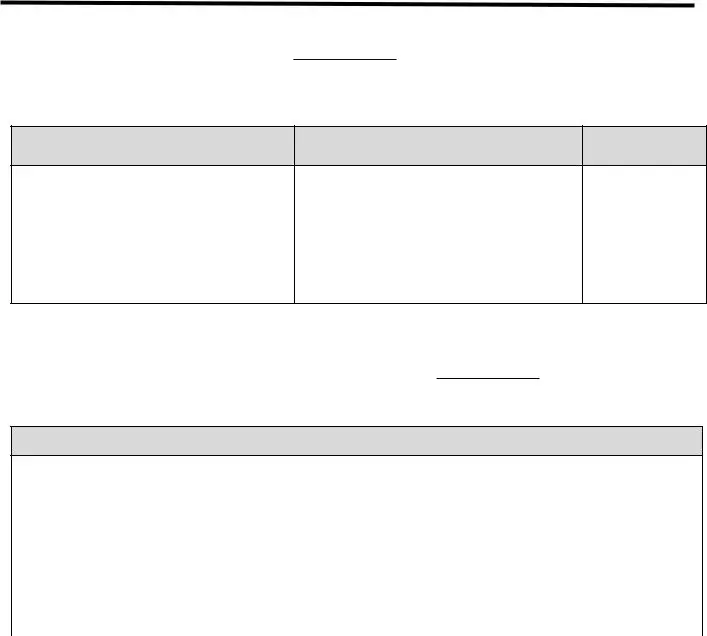The Advance Beneficiary Notice of Non-coverage (ABN) form, utilized within the U.S. Medicare system, notifies patients about services and items that Medicare is not expected to cover, thereby making patients responsible for payment. One document similar to the ABN is the Explanation of Benefits (EOB). The EOB is sent to Medicare beneficiaries after the processing of a claim, detailing what has been paid to the provider and what the patient may owe. Both documents serve to clarify the coverage and financial responsibilities, but while an ABN is given before receiving services, an EOB is provided afterward.
Another document akin to the ABN is the Prior Authorization Request form used by many insurance companies. This form is filled out by a healthcare provider to obtain approval from an insurance company before providing certain services or drugs. Like the ABN, it helps to ensure that patients are informed about their potential financial obligations for services that may not be covered under their current insurance policy if prior authorization is not granted.
The Notice of Privacy Practices is also related in its emphasis on informed consent. Required by the Health Insurance Portability and Accountability Act (HIPAA), this notice informs patients about how their health information may be used and disclosed. Although it focuses on privacy rather than financial liability, like the ABN, it underscores the importance of transparency between healthcare providers and patients.
Similarly, the Informed Consent forms that patients sign before undergoing medical procedures have a common goal with the ABN: ensuring patients are fully informed. These forms explain the risks, benefits, alternatives, and potential costs associated with a procedure, helping patients to make knowledgeable decisions about their care, including the understanding of any out-of-pocket costs.
The Medicare Summary Notice (MSN) resembles the ABN and the EOB by providing detailed information on services billed to Medicare, the amount Medicare paid, and what the beneficiary is responsible for. However, unlike the ABN, the MSN is a retrospective document that summarises services already received and covered (or not) by Medicare.
Denial Letters from insurance companies share similarities with the ABN as well. These letters notify beneficiaries about a claim or service that the insurance company has decided not to cover, explaining the reasons for denial and informing patients of their appeal rights. Both documents are crucial for financial planning and appeals in the healthcare process.
Out-of-Network Liability and Balance Billing Statements are also comparable. These statements are given when patients receive care from providers outside their insurance network, potentially leading to higher charges not fully covered by insurance. They alert patients, similarly to the ABN, about additional expenses they may incur, promoting transparency in healthcare billing.
The Coverage Determination Letter, used in the context of pharmacy benefits, informs patients about whether a particular drug is covered under their plan and to what extent. Like the ABN, this letter plays a critical role in setting expectations regarding the patient's financial responsibility for their medication.
Finally, the Patient Responsibility Estimate, which healthcare providers often give to patients before elective procedures, estimates the amount patients will need to pay out-of-pocket. It parallels the ABN's function by forecasting expenses not covered by insurance, thus aiding patients in making informed decisions about their care based on potential costs.
Each of these documents, while serving distinct functions within the healthcare and insurance systems, shares the fundamental purpose of the ABN: to ensure that individuals are fully informed about their rights, responsibilities, and the financial aspects of their healthcare, fostering a transparent and accountable healthcare system.

